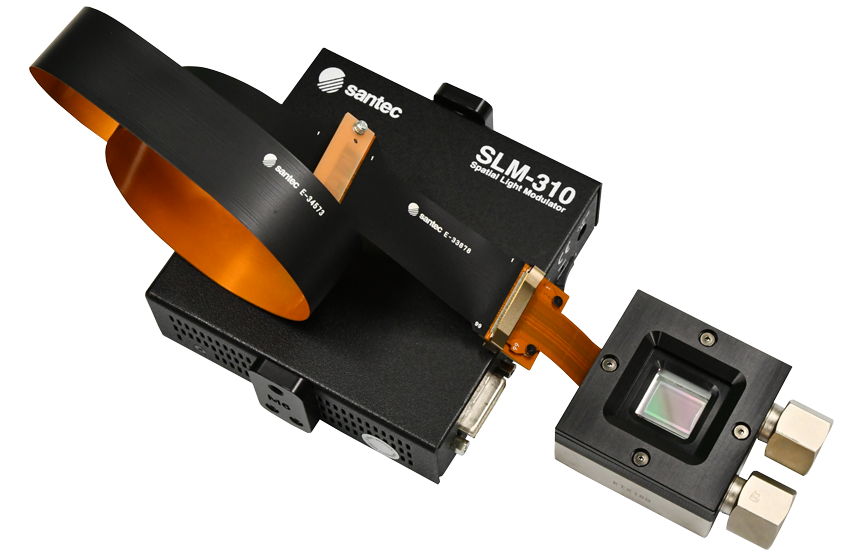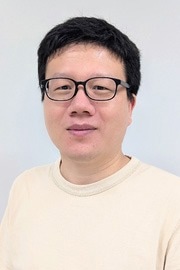In this interview, AZoOptics speaks with Dr. Weiyong Liu, R&D Engineer at Santec, about developing the SLM-310, an industrial-grade LCOS-based spatial light modulator engineered to deliver high precision and reliability in high-power laser processing applications. Dr. Liu explains the technical innovations behind its high thermal tolerance, precise phase modulation, and broad wavelength compatibility, and how these advancements are opening new possibilities in laser-based manufacturing.
Can you introduce the SLM-310 and explain what motivated its development within the context of high-power laser processing?
The SLM-310 is an LCOS-based spatial light modulator designed to withstand laser powers in the 1 kW class. As high-power lasers become increasingly prevalent in material processing - especially for metals - conventional SLMs have struggled due to limitations in light resistance. In response to growing industrial demand for SLMs that can handle such power levels, Santec initiated the development of the SLM-310.
The SLM-310 is described as a groundbreaking 1 kW-class spatial light modulator. What key design innovations enable it to handle such high laser power compared to conventional LCOS-based SLMs?
Rather than relying on a single design breakthrough, the SLM-310 was developed through a fundamental reevaluation of thermal calculations, strictly adhering to first principles. This approach enabled us to optimize the system for high-power laser tolerance.
Thermal management seems critical in high-power optical systems. How did your team address heat tolerance and thermal lensing in the SLM-310 design?
The SLM-310 incorporates a water-cooled system to manage the thermal load from lasers up to 1 kW. This effectively suppresses thermal lensing, ensuring stable performance during high-power operation.
The developer interview mentions challenges with liquid crystal alignment under high intensity. What solutions or materials did you employ to improve long-term stability and performance?
We selected liquid crystal materials with suitable phase transition temperatures and integrated a cooling structure with ample thermal capacity. These choices were key to achieving long-term stability and consistent performance under intense laser exposure.
How does the SLM-310 contribute to shaping laser beams for specific industrial applications like welding or surface texturing? Could you provide a practical example of its impact in real-world usage?
Using the SLM-310 for beam shaping allows dynamic and instantaneous switching between various laser profiles, such as ring-shaped, top-hat, or multi-spot patterns. This flexibility is essential for optimizing laser processing in welding and surface texturing applications.
What advantages does LCOS technology offer over alternative SLM architectures in this power range, especially when considering wavelength range and phase modulation accuracy?
LCOS (Liquid Crystal on Silicon) technology offers several advantages:
1. High Phase Modulation Accuracy
LCOS SLMs support analog phase control, enabling precise wavefront shaping and low phase flicker - critical for stable and accurate beam profiles.
2. Broad Wavelength Compatibility
With high-reflectivity coatings and optimized liquid crystal materials, LCOS SLMs typically support wavelengths from 400 nm to 1600 nm, making them suitable for visible, near-infrared, and telecom lasers.
3. High Power Handling
LCOS SLMs can be engineered with water-cooled systems and thermally optimized backplanes to handle up to 1 kW laser power. Their reflective architecture reduces absorption and thermal load on the liquid crystal layer.
Source: Santec Corporation
| Technology |
Phase Accuracy |
Wavelength Range |
Power Handling |
Beam Control Flexibility |
| LCOS-SLM |
High (analog) |
Broad (400–1600 nm) |
High (up to 1 kW) |
Very high (dynamic, 3D) |
| MEMS Mirrors |
Low |
Moderate |
High |
Limited (scanning only) |
| Galvanometer Scanners |
Low |
Moderate |
High |
Limited (2D scanning) |
| Diffractive Optics |
Fixed |
Narrow |
High |
None (static patterns) |
The product marks a shift from research-grade to industrial-grade use of spatial light modulators. How do you see the role of the SLM-310 evolving as laser-based manufacturing scales up in complexity and precision?
SLM-based laser processing enables simultaneous multi-spot irradiation and asymmetric beam shaping - challenging tasks for conventional galvanometer scanners.
These features significantly enhance processing precision and flexibility, reduce machine time, and minimize setup changeover. We expect SLM technology to expand beyond laser processing into fields like metal 3D printing and other advanced manufacturing sectors.

Image Credit: Santec
As Santec enters the industrial high-power optics space with this product, how are you collaborating with system integrators or laser OEMs to ensure compatibility and adoption?
Santec is transitioning the SLM-310 from research-focused applications to industrial use. We are providing demo units to interested customers, so customers can evaluate performance firsthand.
What kinds of feedback or use cases are you hoping to receive from early adopters, and how might that influence the next generation of SLMs at Santec?
We are particularly interested in feedback on size, weight, and durability for industrial environments. While we anticipate applications in laser processing, we also welcome unexpected use cases that could inspire future innovations.
Looking ahead, are there plans to extend the capabilities of the SLM-310 into other wavelength bands or laser power classes?
The SLM-310 is currently optimized for the 1 μm wavelength range. However, if there is demand for compatibility with visible or UV wavelengths, or for handling higher laser powers such as 2 kW or 3 kW, these would guide the next-generation SLM.
Where can readers find more information?
Further information can be found from the links below:
https://aoc.santec.com/en/news/2025-05-23-slm-310/
https://aoc.santec.com/en/products/slm/
About Dr. Weiyong Liu
Dr. Weiyong Liu earned his Ph.D. from the University of Electro-Communications in Tokyo, Japan, in 2022, specializing in nonlinear optics and tunable laser sources. He joined Santec the same year to focus on R&D for SLM products. As a key member of the R&D team, his work focuses on developing advanced beam-shaping tools for both research and industry.
About Santec
Santec Holdings Corporation, founded in 1979 and based in Komaki, Japan, is a global leader in photonics innovation. It develops advanced tunable lasers, optical test instruments, and medical imaging systems. With over 180 patents, Santec emphasizes technical excellence in optical communication, biophotonics, and precision measurement, driving cutting-edge solutions worldwide.

This information has been sourced, reviewed and adapted from materials provided by Santec Corporation.
For more information on this source, please visit Santec Corporation.
Disclaimer: The views expressed here are those of the interviewee and do not necessarily represent the views of AZoM.com Limited (T/A) AZoNetwork, the owner and operator of this website. This disclaimer forms part of the Terms and Conditions of use of this website.